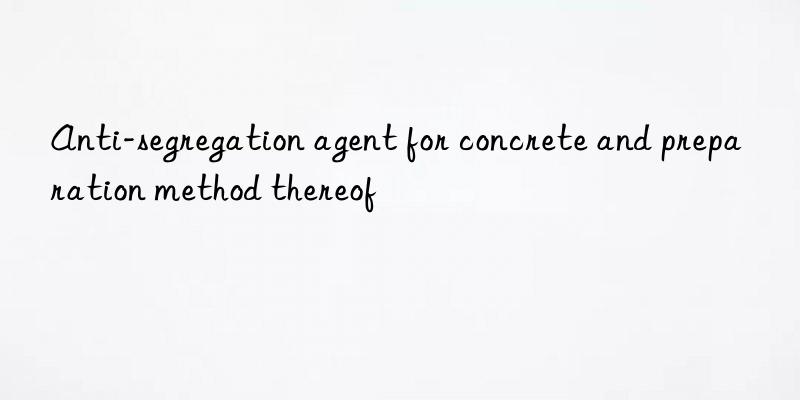
This technology relates to an anti-segregation agent for concrete, which is copolymerized from 30 to 100 parts by weight of Class A monomers and 20 to 160 parts by weight of Class B monomers. The A-type monomer is any one or a mixture of two or more of acrylamide, N-hydroxymethylacrylamide, acrylic acid, and methacrylic acid in any proportion; the B-type monomer is hydroxyethyl acrylate. Any one or a mixture of two or more of ester, hydroxyethyl methacrylate, hydroxypropyl acrylate, hydroxypropyl methacrylate, prenyl alcohol polyoxyethylene ether, etc. in any proportion. The concrete anti-segregation agent synthesized by this technology has good compatibility with concrete and does not affect the strength development of concrete. It effectively solves the problem of concrete segregation and bleeding at the construction site, improves the anti-segregation performance of concrete, and makes it easy to pump.
Concrete, as the largest building material, has developed rapidly. In recent years, high-strength and high-performance concrete has been widely used in engineering. The fluidity of concrete has developed from the previous 70~90mm to the current slump of 180~230mm. Some projects also use self-compacting concrete, and the pumping height is getting higher and higher. In order to facilitate construction, pumped concrete needs to have greater fluidity and maintain this performance for a certain period of time, that is, it requires small slump loss, no bleeding, and no segregation. At present, the quality of aggregates in our country is getting worse and worse, the void ratio of sand and gravel is getting larger and larger, the natural sand is almost exhausted, and the manufactured sand has particles above 4.75mm.
The content of particles with large diameter is high. In this case, due to the demand for large fluidity of concrete, the water consumption and slurry-to-bone ratio in concrete will inevitably increase. Fluctuations in raw materials and construction organization problems in concrete mixing stations have caused many pumped concretes to be in an unstable state of segregation and bleeding at the construction site. This kind of concrete can easily block the pump during pumping, causing trouble to the construction. In serious cases, the construction site has to return the concrete.
Products on the market that can be used to resist segregation in concrete include polyacrylamide, sulfonated polyacrylamide, sulfomethyl phenolic resin, and polystyrene Sulfonic acid, etc., but due to its strong flocculation effect, the concrete will settle quickly and the concrete will lose its flow properties instantly, which is detrimental to the workability of the concrete



 微信扫一扫打赏
微信扫一扫打赏
